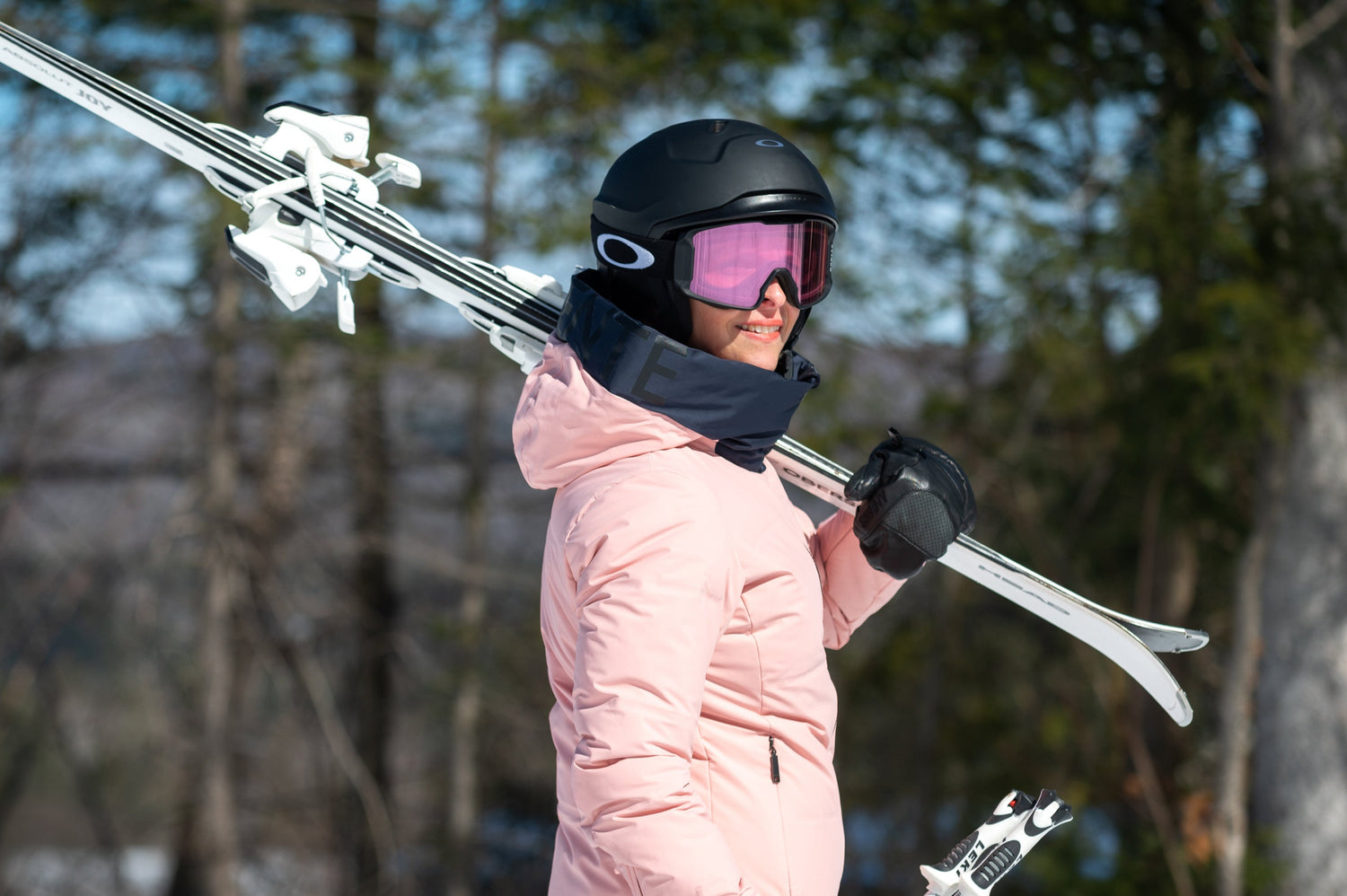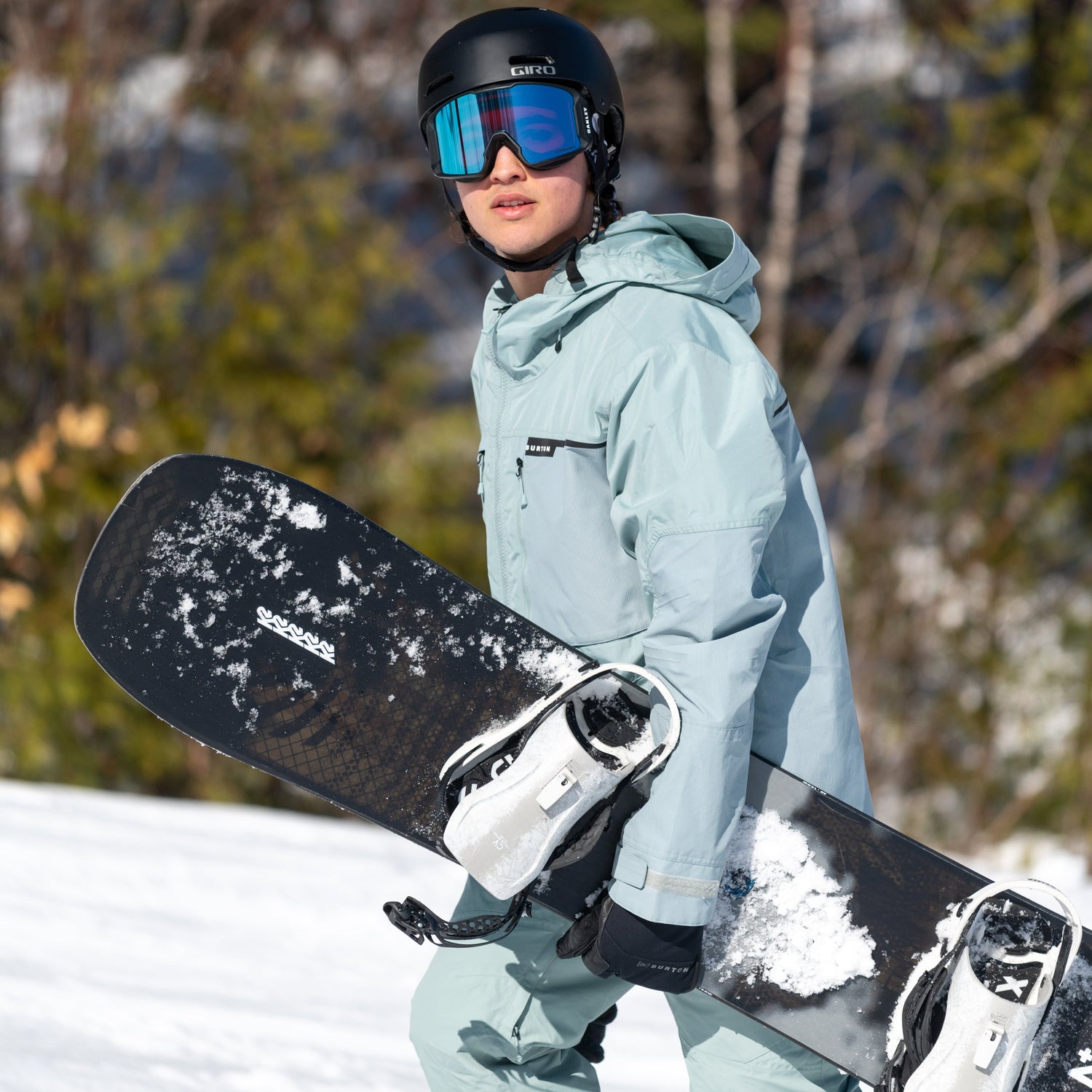All About the Layering System
Nothing beats the joys of winter during a long day outdoors snowshoeing, ski touring, cross-country skiing, or just taking in the snowy wonderland. Dressing appropriately is crucial to making the most of your day and keeping the good times going. The layering system makes this much easier to achieve. Each layer plays a specific role, and it’s important to understand each one.
The layering system’s name says it all. Wearing multiple layers ensures optimal comfort during days with variable weather or intense activities. The layers work together in perfect harmony, each one essential for the system to perform at its best. The base layer (aka long underwear), the cornerstone of the approach, wicks away moisture. The mid layer, often a vest or jacket, regulates body temperature and traps heat. The outer layer, or shell, protects against the elements, such as wind and precipitation.
Although primarily used in fall and winter, this system is useful year-round, particularly in unpredictable conditions. Just put on or take off a layer as needed, depending on the temperature and your activity’s intensity.
See our articles on layering and base layers to get the most out of this system.
What’s a Mid Layer?
The mid layer is worn between the base layer and outer layer and acts as a link between the two. This central component of the layering system helps trap body heat while not retaining moisture. The mid layer provides insulation in the layering system.
When the outside temperature is high or the activity is intense, wearing a base layer isn’t necessary. However, we recommend always having one with you for unexpected weather changes. In cool conditions, a fleece jacket or lightweight down jacket make excellent mid layers. When the mercury dips, it’s best to have a thick down jacket for maximum warmth. You can also wear mid layers over each other. In very cold or frigid weather, you can, for example, wear a fleece under a synthetic jacket.
The mid layer should be close-fitting yet loose enough to be worn over a base layer without restricting your movement during sports.

Understanding Mid Layers’ Various Types of Insulation
There are three main types of insulation: down, synthetic insulation, and fleece.
Down Insulation
Down is made from wispy feathers. Its superpower? Trapping heat. In fact, it’s the warmest material on the market. It’s also ultralight and compressible. Since it doesn’t take up much space in your pack, it’s easy to carry and an ideal garment to slip into suitcases when travelling. Though fragile, down insulation is quite durable when well taken care of. It’s worth noting that down doesn’t perform well when wet. Therefore, it’s best not to use it during activities that make you sweat a lot. Instead, wear it during everyday or low- to moderate-intensity activities.
Synthetic Insulation
Synthetic insulation is made from polyester fibres that are durable and easy to maintain. Synthetic insulation is highly effective: it’s very breathable, even when wet, efficiently wicks sweat away, and prevents heat loss effectively. It retains its insulating properties in all conditions. Breathable and quick-drying, it’s ideal for aerobic and high-intensity activities.
Fleece
Fleece is made from a breathable, lightweight, extremely soft, very durable synthetic thermal fabric. Fleece keeps warm air close to the body and slows thermal energy loss because the fibres’ strands trap air. It can keep you warm even when damp or wet. Plus, it has the advantage of being more affordable than other materials on the market, such as down. However, it doesn’t repel water and maintains its volume, so it’s not very compressible.

How to Choose a Mid Layer?
At Oberson, we firmly believe that there isn’t bad weather, just poor clothing choices. That said, there is no good or bad mid layer. You just need to ask the right questions and consider the situation. Certain properties vary in importance based on the circumstances. It’s especially important to consider the temperature, weather conditions, and your activity’s intensity level.
Keep practicality in mind when choosing a mid layer. The garment should be easy to put on and take off. Since your body temperature and the weather conditions are likely to change often during the same activity, you’ll probably need to make frequent adjustments. Moreover, personal preference may influence your choice. For example, some people prefer one texture over another or place greater importance on clothing’s weight.
Down Insulation
For down insulation, be sure to look at its fill power, which ranges between 550 and 1000 and refers to the down’s volume. The higher the number, the more the jacket retains body heat. As mentioned above, you’ll benefit from down insulation’s properties as long as it isn’t wet from sweat, precipitation, or humidity. It makes a great choice for walking, easy hiking, camping or when you’re between periods of intense physical activity or just out and about in your daily life.
Synthetic Insulation
For synthetic insulation, the material’s thickness is the reference for assessing its qualities and performance. The measurement, which often ranges from 50 g/m² to 200 g/m², determines the insulation’s warmth level. The higher the number, the more heat it retains. In other words, the higher the number, the thicker the filling and, consequently, the warmer it is.
Fleece
The thicker the fleece, the more it insulates. Weight is generally a good indicator of its insulation and heat retention capabilities. Depending on the thickness of the chosen garment, fleece works well for intense activities, such as hiking, running, cycling, or simply fireside relaxation at the cottage.

Our Favourite Mid Layers
While each type of mid layer has its strengths and weaknesses depending on the temperature, weather conditions, and activity, we’ve highlighted the best options for certain situations.
For cold, dry days: down insulation
For humid days and variable weather: synthetic insulation
For soft comfort: fleece
For low- to moderate-intensity sports and everyday activities: down insulation
For high-intensity sports: synthetic insulation
For durability: synthetic insulation and fleece
For travelling light: down insulation
For a budget-friendly option: synthetic insulation or fleece
For easy, minimal maintenance: synthetic insulation




